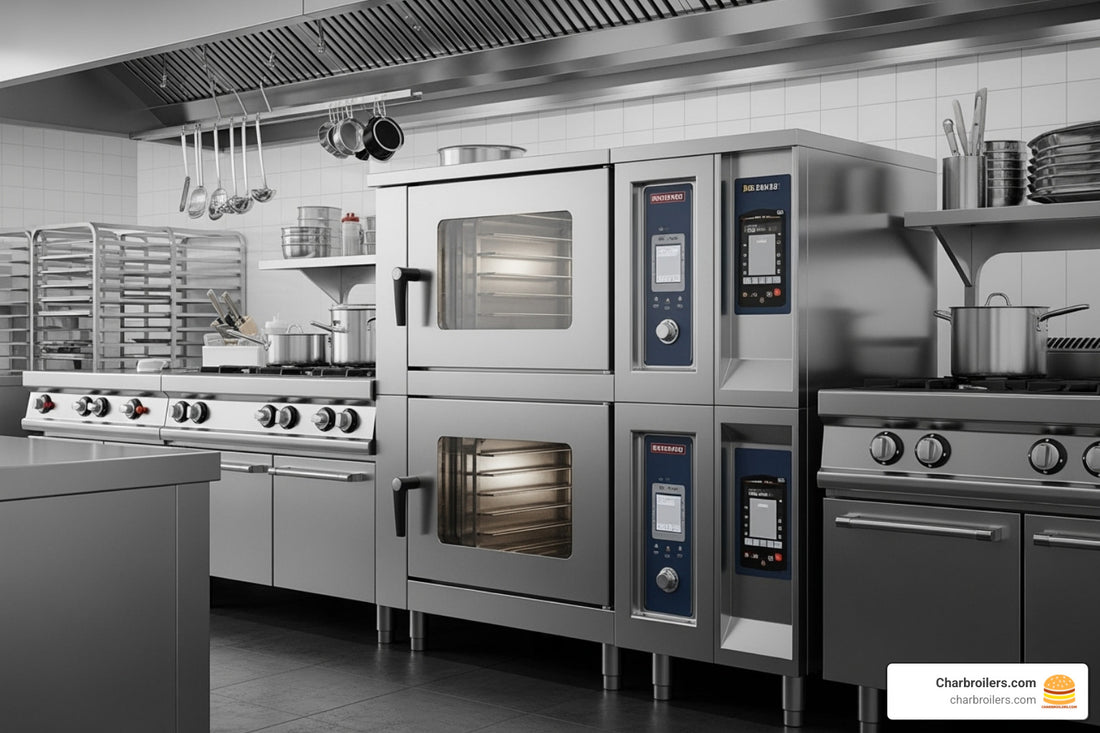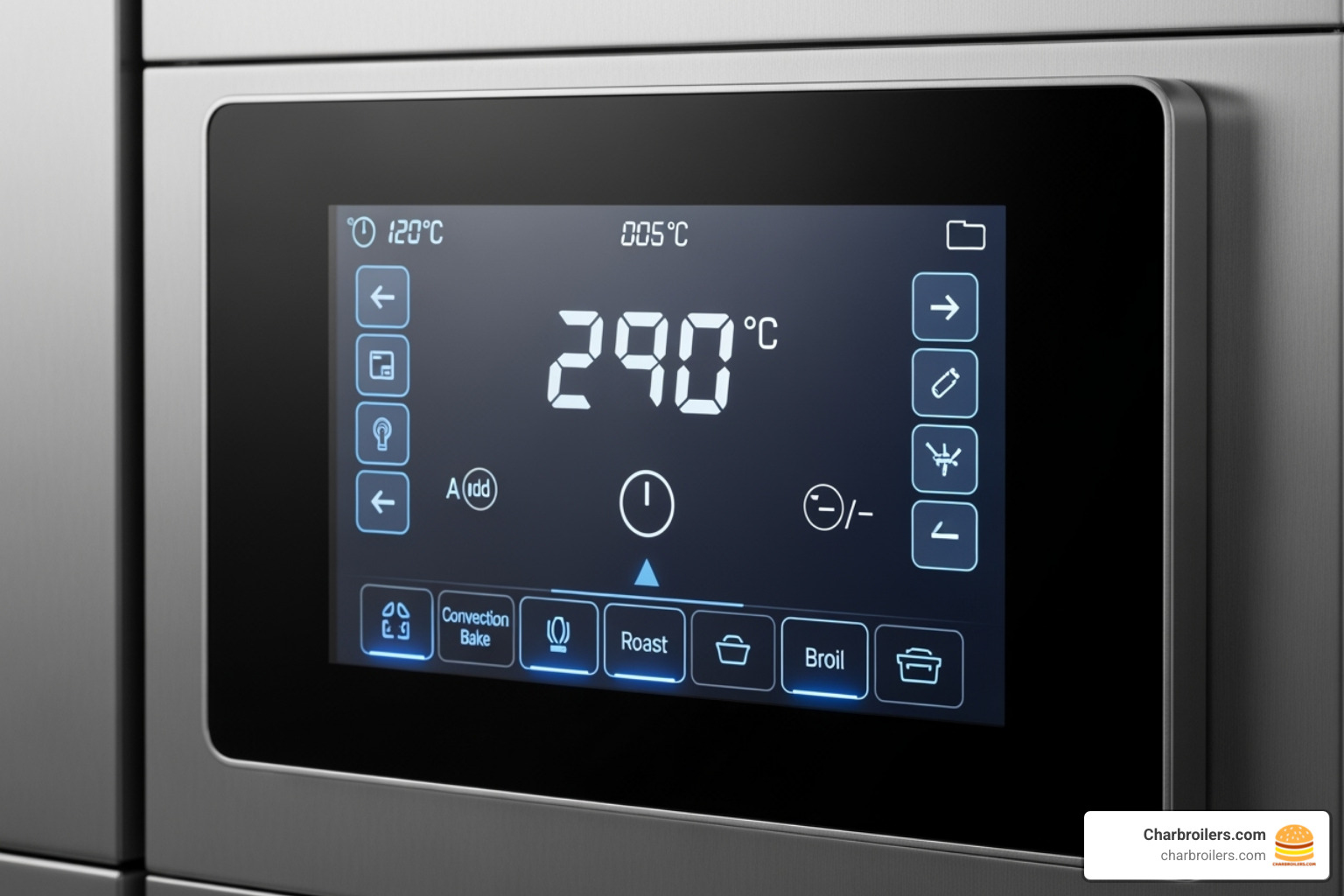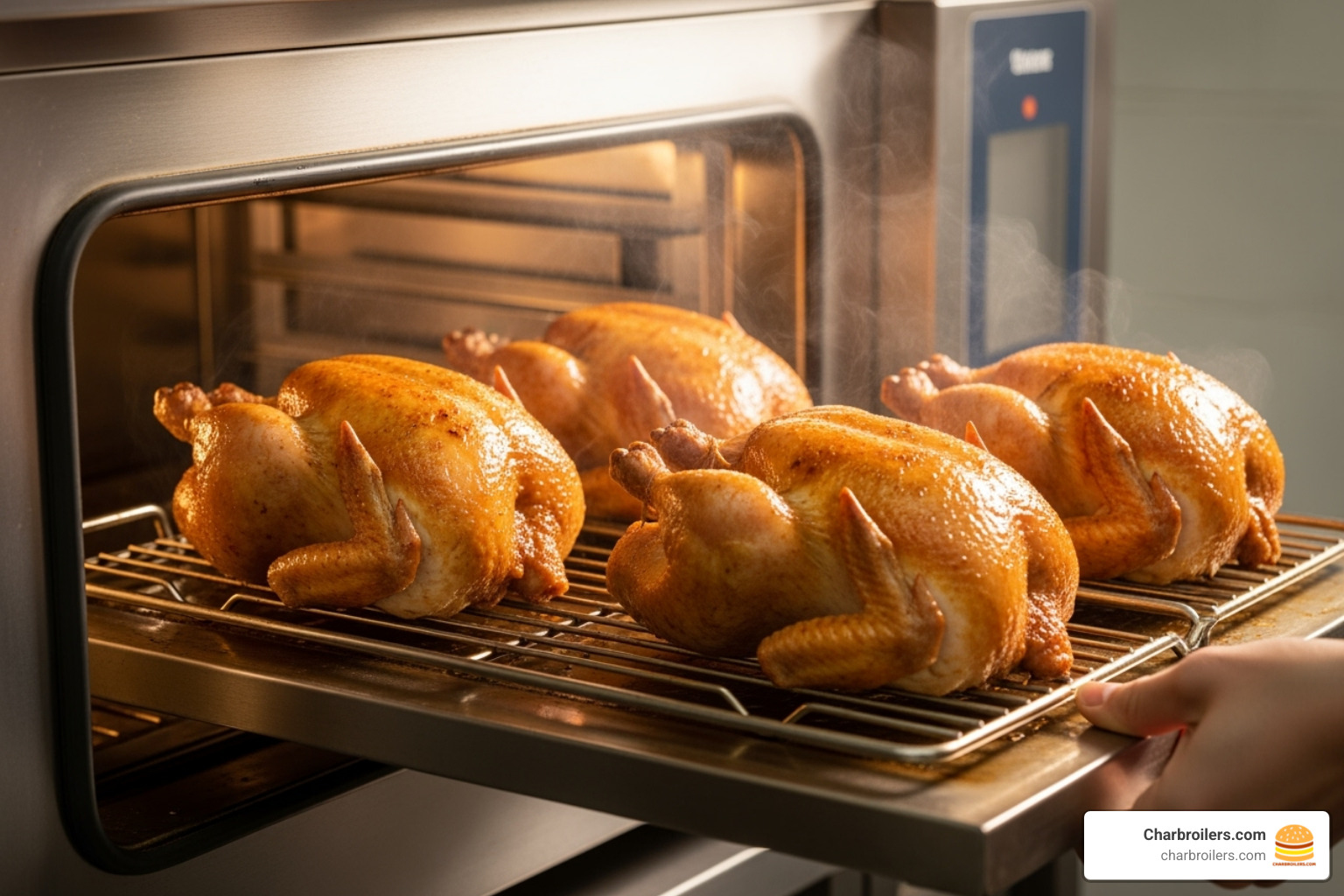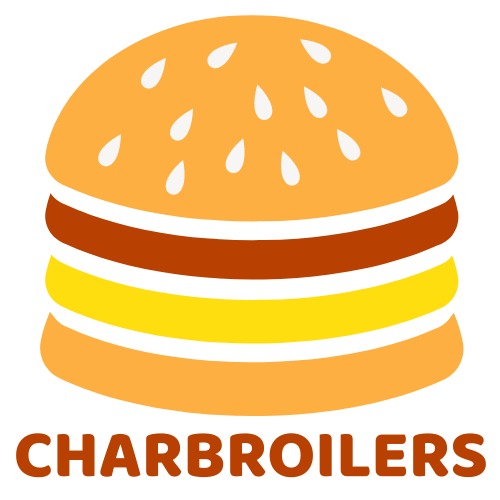
Cook Faster, Earn More – Top Industrial Convection Ovens Reviewed
Share
Why Industrial Convection Ovens Are Essential for Your Commercial Kitchen
Every busy kitchen needs a reliable workhorse—one that keeps ticket times short without sacrificing quality. Enter the industrial convection oven. By forcing hot air across every rack, these ovens slash cook times, eliminate hot and cold spots, and deliver the consistent results diners expect. Faster turns mean higher sales; even heat means less waste; lower operating temperatures mean real savings on utilities. In the sections that follow, we break down how the technology works, which configurations fit different operations, and which features offer the best return on investment for restaurants, bakeries, and caterers alike. Let’s dive in and find the right oven to help your business cook faster and earn more.
How Convection Technology Revolutionizes Commercial Cooking
An industrial convection oven uses high-speed fans to move hot air over, under, and around food, cooking it up to 25 % faster than a static oven at temperatures that can be 25–30 °F lower. The result? Perfect browning, moist interiors, and remarkable consistency across every rack.
The Science Behind Faster, Even Cooking
Traditional ovens rely mostly on radiant heat; pockets of cooler air can leave some portions underdone. Convection models introduce forced air convection—powerful fans plus carefully designed ducts that blanket food with heat. That airflow also pulls surface moisture away, creating crisp skins on roast chicken, flaky layers in pastries, and caramelized vegetables every time.
Primary Benefits for Your Food Service Business
- Higher output: Shorter cook cycles free up racks, letting you serve more guests during peak periods.
- Rock-solid consistency: Say goodbye to hot spots; every tray looks and tastes the same, shift after shift.
- Energy savings: Lower set points and quicker recovery translate into noticeably smaller utility bills.
- Menu flexibility: From artisan breads to sheet-pan dinners, one oven handles baking, roasting, reheating, and even low-temp dehydrating.
- Smoother workflow: When proteins finish sooner and pastries proof reliably, your entire brigade works with less stress and fewer bottlenecks.
Choosing Your Kitchen's Workhorse: A Guide to Industrial Convection Oven Configurations
Picking the perfect oven means matching fuel, size, and deck count to your volume and utilities.
Gas vs. Electric: Which Fuel Source Is Right for You?
- Gas (50,000–140,000 BTU/hr): Quick heat-up and recovery, often lower operating cost where natural gas is inexpensive. Confirm that your site has adequate gas service or budget for new lines.
- Electric (5.6–25 kW): Superb temperature accuracy and easier installation where gas isn’t available. Just verify voltage (120 V, 208 V, 240 V, or 480 V) and phase before ordering.
Sizing Up: Matching Capacity to Your Output
- Full-size: Holds multiple 18 × 26 in pans—ideal for high-volume restaurants or commissaries.
- Half-size & countertop: Fit 13 × 18 in pans, perfect for cafés, food trucks, or as an auxiliary oven on the cookline.
- Bakery depth vs. standard depth: Bakery models load pans lengthwise for maximum capacity; standard depth offers versatility for mixed menus.
Rule of thumb: choose the smallest footprint that still meets your peak-hour pan count so you’re never turning guests away.
Deck Options: Scaling Your Production
- Single-deck: One cavity for moderate demand or tight budgets (roughly $1,900–$8,400 new).
- Double-deck: Two independent cavities stacked to double output without adding floor space (about $3,700–$17,000). Many brands sell stacking kits, so you can add a second oven when business grows.
Decoding the Specs: Key Features of a Top Industrial Convection Oven

Control Types: From Manual Dials to Programmable Touchscreens
- Manual: Rugged knobs and mechanical timers—simple, inexpensive, and staff-proof.
- Solid-state: Digital readouts add tighter temperature accuracy without full programmability.
- Programmable: Store recipes, adjust fan speeds, and add steam bursts for artisan bread—all at the touch of a button. The extra precision slashes training time and human error.
Understanding Power and Energy Efficiency
- BTU (gas) / kW (electric): Higher numbers mean faster preheat and better temperature recovery.
- Voltage & phase: Match the oven’s spec sheet to your building service to avoid costly electrical upgrades.
- ENERGY STAR® certification: Independently verified efficiency that lowers utility bills for years. (22 of the 24 Vulcan convection models we list meet this mark.)
- Ventless options: Select models with built-in catalytic converters let you add an oven where a hood isn’t feasible—perfect for kiosks or remodels.
Heavy-gauge stainless steel construction, removable doors, and dishwasher-safe racks round out a feature set that keeps maintenance simple and uptime high.
Essential Care and Best Foods for Your Industrial Convection Oven
Your industrial convection oven is a true workhorse in the kitchen, churning out delicious dishes day in and day out. But just like any valuable team member, it needs a little TLC to keep performing at its peak. Regular maintenance and cleaning aren't just about making your oven last longer; they're vital for keeping food safe, staying energy-efficient, and ensuring every dish comes out perfectly consistent.
And while these ovens are incredibly versatile, knowing which foods truly shine in them will help you get the most out of your investment!

What to Cook in Your Industrial Convection Oven
The real beauty of an industrial convection oven lies in its incredible versatility. Thanks to its even heat distribution and ability to create those coveted crispy textures, it's an all-star in almost any kitchen task.
For starters, it's a dream come true for roasted meats and poultry. Imagine whole chickens, large roasts, or even briskets coming out with beautifully browned exteriors and juicy, evenly cooked interiors. The circulating air helps render fat and crisp up skin like magic!
Bakers, rejoice! Your baked goods will benefit immensely. From perfectly risen breads and golden cookies to moist cakes, fluffy muffins, and delicate pastries, the consistent heat ensures even browning and a superior rise. The circulating air also helps set those delicious crusts just right.
Think beyond the basics! Your industrial convection oven is fantastic for pizzas and flatbreads, delivering that perfectly crisp crust every time. Roasted vegetables like carrots, potatoes, and broccoli get wonderfully caramelized and tender-crisp. Even hearty casseroles and gratins achieve a beautiful golden-brown top and are thoroughly heated throughout. You can also efficiently toast nuts, seeds, or croutons, and even use lower temperature settings for dehydrating fruits or making jerky. Need to warm up a big batch? It excels at reheating large quantities of food quickly and evenly, without drying them out.
While an industrial convection oven is a superstar for most items, there are a few delicate foods that might not love the strong airflow. Things like light soufflés, delicate custards, or some very tender cakes can sometimes be affected by the circulating air, leading to uneven rising or surface cracking. For these special cases, a traditional oven or a "gentle bake mode" on an advanced convection oven might be a better choice.
Maintenance and Cleaning for Peak Performance
A clean oven isn't just about appearances; it's about peak performance! In busy commercial kitchens, your industrial convection oven is bound to gather food particles, grease, and other bits. That's why regular cleaning and maintenance are absolutely non-negotiable.
Here’s a simple game plan to keep your oven sparkling and efficient:
First, make daily wipe-downs a habit. After each busy day, let the oven cool down. Then, simply wipe down the interior and exterior stainless steel surfaces with a damp cloth and a mild, food-safe cleaner. This quick step prevents grease and food residue from baking onto surfaces, which saves you a lot of scrubbing later!
Next, dedicate time for weekly deep cleaning. Depending on how much you use it, aim for at least once a week. Start by removing all oven racks. Many modern ovens, like Vulcan's VC5 series, even boast patented, award-winning dishwasher-safe removable doors, making this part much easier! Use a commercial-grade oven cleaner on the interior, always following the product instructions carefully. Make sure to rinse thoroughly to remove all chemical residues. Don't forget to pay special attention to the fan guard and fan blades – keeping them free of grease buildup is key.
Crucially, inspect and clean the door gaskets regularly. These rubber seals are vital for trapping heat and maintaining energy efficiency. Check them for any tears or cracks and clean them to ensure a tight seal. A faulty gasket can lead to heat loss, making your oven work harder and costing you more in energy bills. Also, keep the fan and its housing clear of obstructions. Any buildup here can mess with airflow, making your oven less efficient and its cooking less even.
Finally, don't underestimate the power of a professional servicing schedule. Beyond your daily and weekly tasks, plan for regular professional check-ups, perhaps quarterly or biannually, as recommended by the manufacturer. These pros can check electrical components, gas lines, fan motors, and calibrate thermostats. This ensures your industrial convection oven runs safely and efficiently for many years to come, truly making it a smart, long-term investment.
A diligently maintained and clean oven not only guarantees optimal cooking performance and energy efficiency but also upholds the highest standards of food safety in your commercial kitchen. A little elbow grease (or a good cleaning crew!) goes a long, long way!
Frequently Asked Questions about Industrial Convection Ovens
We hear a lot of questions from our customers about industrial convection ovens, and for good reason! They're a significant investment and a core piece of equipment for any commercial kitchen. Let's tackle some of the most common inquiries we receive, helping you feel confident in your choices.
How much does an industrial convection oven cost?
The price of an industrial convection oven can vary significantly, much like buying a car. It depends on several factors, including the oven's size, its fuel type (whether it's gas or electric), the brand's reputation, and all those wonderful features it offers (think digital controls or special baking modes).
Generally speaking, you can expect different price points based on the configuration. For instance, a single-deck full-size convection oven typically ranges from approximately $1,899.00 to $8,421.00. If you're looking for double the capacity, double-deck full-size convection ovens naturally come with a higher price tag, ranging from approximately $3,749.00 to $17,009.00.
Of course, smaller, specialized models might fall outside these ranges. A half-size, 3-tray oven operating at 120V could be around $1,999.00, while a compact countertop model might even be less, sometimes around $1,363.95 for a 32-inch unit. These figures are for brand-new units. If your budget is a bit tighter, exploring the market for used commercial convection ovens can often yield significant savings. The "best value" isn't just the lowest price, but the oven that best meets your operational needs and offers a strong return on investment through its efficiency and longevity.
Are industrial convection ovens more energy-efficient?
Yes, generally speaking, industrial convection ovens are indeed more energy-efficient than traditional, conventional ovens. This efficiency isn't just a happy accident; it stems from a few clever design reasons that save you money and energy.
Firstly, they boast faster cooking times. Because the fan actively circulates hot air directly onto your food, heat transfers much more rapidly. This means your dishes cook quicker, reducing the overall time the oven needs to be on and consuming energy. We're talking about cooking processes speeding up by about 25% compared to static ovens – that's a lot of saved time and power!
Secondly, they allow for lower operating temperatures. Thanks to that super-efficient heat transfer, convection ovens can achieve the same fantastic cooking results at lower temperatures (sometimes even 25-30% lower) than conventional ovens. Less heat generated means less energy consumed. Plus, their even heat distribution means there are no hot spots, so less energy is wasted trying to compensate for uneven cooking.
The absolute best way to guarantee energy efficiency is to look for models that are ENERGY STAR® certified. This certification means the oven has met rigorous energy performance standards set by the EPA. As we noted earlier, a significant number of leading models, like 22 out of 24 Vulcan convection ovens, proudly carry this certification. Choosing an ENERGY STAR® certified industrial convection oven is a smart long-term investment, as it translates directly into lower utility bills and reduced operational costs for your high-volume kitchen. It's a win-win for your wallet and the planet!
What is the main difference between a commercial and a residential convection oven?
While both commercial and residential convection ovens use a fan to circulate hot air, the differences are akin to comparing a sturdy work truck to a family sedan – they're built for entirely different purposes and demands.
Let's start with durability and construction. Industrial convection ovens are built like tanks. They are carefully crafted with heavy-duty materials, primarily thick gauge stainless steel, specifically designed to withstand the constant, rigorous use, high temperatures, and frequent cleaning cycles demanded by a busy commercial kitchen. Residential ovens, while perfectly functional for home cooking, use lighter materials and simply aren't engineered for continuous, high-volume operation.
Then there's capacity and size. Commercial ovens are significantly larger, designed to comfortably accommodate multiple full-size commercial sheet pans (those big 18" x 26" ones). They feature much larger interior volumes to handle mass production, which is essential when you're feeding dozens or even hundreds of customers. Residential ovens, on the other hand, are smaller, built to fit neatly into home kitchens, and typically only hold standard home baking sheets.
Consider power and performance. Industrial convection ovens boast much higher power ratings (measured in BTU for gas models and kW for electric) to heat up incredibly quickly, maintain consistent temperatures even under heavy loads, and recover rapidly after the door is opened. They are engineered for consistent, high-performance output, day in and day out. Residential convection ovens have lower power, slower heat-up times, and aren't designed for the same level of continuous, demanding use.
Finally, think about features and controls, as well as ventilation and installation. While some high-end residential ovens do offer digital controls, commercial models often feature far more robust, precise, and programmable controls. These can include advanced features like multi-stage cooking, moisture injection, and specialized modes designed for very specific commercial applications. Plus, industrial convection ovens typically require specific ventilation systems (like commercial hoods) due to the significant heat and exhaust they produce, whereas residential ovens usually only require standard kitchen ventilation.
A commercial industrial convection oven is a professional-grade tool, purpose-built for efficiency, durability, and high-volume production. It's a stark contrast to its residential counterpart, which is designed for occasional home use.
Conclusion
So, we've taken quite the journey through industrial convection ovens, haven't we? It's clear that this isn't just another piece of kitchen equipment; it's a game-changer. Think of it as a strategic investment that truly boosts your restaurant's efficiency, keeps your dishes consistently amazing, and ultimately, helps your bottom line.
We've explored how its fan-driven magic revolutionizes cooking. From slashing cooking times to ensuring every bite is evenly heated, and even saving you on energy bills, the benefits are huge. Whether you're roasting meats to perfection or baking pastries that sing, these ovens are true kitchen workhorses, ready for almost anything you can throw their way.
Choosing the perfect industrial convection oven means finding the right fit for your unique kitchen. Whether it's a robust gas model or a precise electric one, a single or double deck to handle your volume, or the ideal size for your space, getting the configuration right is key. And remember, diving into the specs – from fancy digital controls to power ratings and those money-saving ENERGY STAR certifications – ensures you're picking a powerful, smart, and sustainable partner for your culinary trips.
Of course, like any great partner, your oven needs a little TLC. Regular maintenance and cleaning aren't just chores; they're essential steps to keep your oven performing at its peak, ensuring food safety, and making sure your investment lasts for years to come.
An industrial convection oven is an investment that truly pays off. It means increased productivity, consistent quality that keeps customers coming back, and a smoother, happier kitchen for your team.
At Charbroilers.com, we get the hustle and bustle of the food service industry. We're here to help you steer all the options and find that perfect industrial convection oven that will genuinely help you cook faster and earn more.
